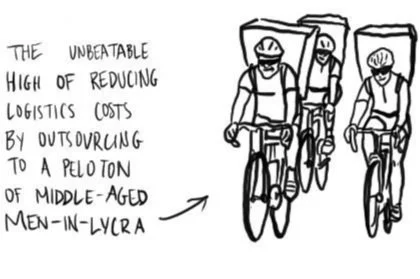The Measure of Good Leadership in Innovation
Key Insights
Information is key to good decisions making.
The key is in identifying and measuring the right data.
Having limited feedback loops reduces our sensitivity to context and results in poor decisions and outcomes.
Putting too much value on measuring dollars at the expense of other metrics risks jumping to weakly-formed conclusions.
We must resist the chemistry that nudges us away from pursuing hard-earned prizes.
Leveraging and collecting the right data from the start is critical for ongoing, impactful innovation.
There’s a reason the game ‘Battleships’ is timeless. Winning involves slowly deducting, by trial-and-error, information about where your opponent is positioned so you can beat them. Whether you ‘hit’ or ‘miss’ helps you know where to go next.
In real world organisations, information is key to good decision making, but isn’t so straightforward as ‘hit’ or ‘miss’. Leveraging and collecting the right data from the start is critical for ongoing, impactful innovation. Below, I lay out why identifying and measuring the right data is important, and some key challenges to consider.
‘Plans are useless, but planning is indispensable’ - Eisenhower
Whether you’re exploring the future of digital therapeutics at a global pharmaceutical corporation, or making citizen-impacting change at a federal government level, all business leaders are tasked with getting their organisation to an outcome. Critical to success is the ability to identify a vision and make a plan for how to get there.
Getting from Point A to B seems straightforward on paper, but it’s a vast gulf when rubber hits the road. Coordinating the parts of an organisation cohesively, responding to changing conditions, and arriving intact is more than a few balls in the air. In order to boost our chances of success, more measurement means more feedback loops.
Seek feedback loops from the start
Having access to plenty of high-quality information is crucial to realising a vision. Whether it’s customer insights, financials, manager reporting, industry trends - all data provides feedback loops. The more we accumulate, the clearer our understanding of the ‘Point A’ state of play, and the better positioned we are to orient ourselves towards the most desirable ‘Point B’. This means setting them up from square one so we can avoid the blindspots we might encounter later on.
More and better-measured feedback, please
Having limited feedback loops reduces our sensitivity to context and results in poor decisions and outcomes. A striking analogy demonstrating this is Congenital Analgesia, a condition where sufferers cannot feel physical pain, and as a result historically have had low life expectancy, lacking sensory feedback loops that usually help us avoid injury. By identifying the information we need, and finding reliable, accurate ways to measure it, we equip ourselves to make effective decisions. The question is how to approach strategically setting measures to maximise impact?
Different scales, deeper insight
Measuring at different scales can be as informative a dimension as seeking completely different kinds of data. It provides grounding to better triangulate causes of positive and negative outcomes - especially helpful in the context of innovation. For example, tracking ROI at a Micro level (on a project or initiative basis) can help diagnose causation that is seen at a Macro level (organisation-wide). This is the approach suggested in Strategic Design: Eight Essential Practices Every Strategic Designer Must Master for measuring strategic design impact (full disclosure - our Managing Director for Strategy Norman Azabagic contributed!). Macro-level ROI measurement of innovation investment also provides helpful insight to the real value of the expenditure alongside typical business-as-usual costs such as legal, marketing, finance. This can help add dimension to insights for ongoing future investment in what otherwise can feel like a very fluffy category of spending - although beware the risk of only measuring dollars.
Choosing what we value, choosing what we measure
Putting too much value on measuring dollars at the expense of other metrics risks jumping to weakly-formed conclusions. A variety of strong feedback loops is needed to solidify learnings that will help us secure and scale growth events, or avoid and reduce losses. If it looks like a duck, then it might be a duck, but if it looks, quacks, and feels like a duck, I’ll put all my money on ‘duck’.
While some types of metric are comparatively low-hanging fruit to harvest (ie anything that fits on a spreadsheet), the other stuff is still worth climbing the tree for. More qualitative feedback loops like customer satisfaction and organisational culture are tricky to track rigorously but they are invaluable in supporting strong organisational decision making. Many look to non-numerical inputs with scepticism when assessing decisions, but we must learn to fight that hesitancy; as you’ll see below, it’s an unhelpful side effect of our innate human love for problem solving that supports adaptation.
Hack your biases to get richer information
Feedback loops are powerful because they are rewarding to engage with (also the basis for why gamification is such a powerful tool for shaping behaviour). When the causation of a feedback loop is clear and we use it to solve a problem successfully, we get a dopamine hit.
Example:
Increased price of gas > increased logistics cost > ‘How can we reduce reliance on gas?’ > I successfully lowered logistics costs by hiring a local peloton of middle-aged men in lycra to make bike deliveries!
As a result, we lean too much on the easy measures that reward us, and avoid confronting the more slippery but just-as-useful ones without the saccharine hit - a dangerous kind of natural selection to fall into. We must resist the chemistry that nudges us away from pursuing hard-earned prizes.
The question then, is what, how, and where might we collect and measure data that is strong and varied enough to give us the rich insights needed for making good future decisions?
NEXT STEPS:
WAVE’s approach is to derisk innovation by starting with the more slippery-seeming measures; human experience, needs, and behaviours. We use human centered design methods and tools to embed rigorous desirability measures at the core of initiatives, while driving project feasibility and viability measures alongside. As a consequence, innovating with us becomes a confident series of small leaps of logic, rather than a huge leap of faith. To read more on what this looks like, check out Dr Munib Karavdic’s article on Leaps of logic vs Leaps of Faith here, or to have a chat about how we can support your innovation journey, please get in touch with me at india@wave.design.
Interesting in learning more? Here are some additional links to check out:
Fascinated to learn more about Congenital Analgesia?
Interested in metrics? - check out this podcast on happiness metrics if that tickles your fancy
Feedback loops and gamification - take a read!
India is a service designer with a track record of delivering contextually informed and rigorously researched human-centred outcomes. She is also known to clients through our Opportunity Accelerator training program. India started her career in communications and brand strategy by asking how you get other people to listen and engage, how you learn to speak their language.
Get in touch
Interested to learn more about how to effectively measure your innovation? Get in touch with one of our senior designers to discuss how we can help.






